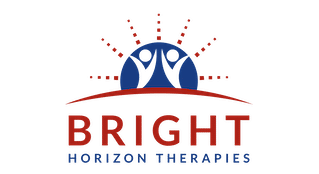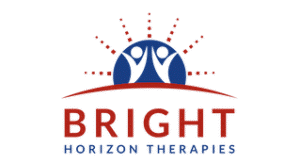Childhood trauma touches more lives than we often realize. As an adult with childhood trauma, it often shows up in ways we don’t immediately connect back—like getting stuck in certain thought patterns, feeling tense in our bodies, or struggling in relationships. Even if the original experiences happened long ago, their impact can still ripple through daily life. EMDR for childhood trauma offers the possibility to process your experience in a trauma-informed way.
And it doesn’t mean endlessly talking about the past. It’s about approaches that work with your nervous system, help you feel safe, and reconnect you with the strengths already inside you. As I wrote in Adults with Childhood Trauma: How to Heal and Reclaim Your Life, EMDR (Eye Movement Desensitization and Reprocessing) is one of the most effective tools I use in combination with parts work therapy. It gives the brain and body a chance to finally process what was too overwhelming back then.
Why EMDR for childhood trauma feels different
If you’ve ever been through talk therapy, you know it often involves telling and retelling painful stories. EMDR for childhood trauma takes a different path. Instead of focusing only on the story, it helps your brain reprocess the stuck feelings connected to those memories—so they no longer have the same hold on you.
It uses gentle, rhythmic eye movements to activate your brain’s natural ability to heal. But EMDR isn’t “just about moving your eyes.” It’s a whole process that includes safety, preparation, reprocessing, and integration. Think of it as guiding your nervous system back into balance step by step.
Laying the groundwork: safety first
One of the most essential parts of trauma healing is pacing. Before diving into painful memories, EMDR begins with a preparation phase. The goal is to ensure you feel safe enough to approach the work without becoming overwhelmed.
I often describe this as developing dual awareness. Dual awareness is the ability to hold two experiences at the same time:
- The present moment: Being aware of what is happening around you and within your body right now.
- The memory or emotion: Noticing the thoughts, sensations, or feelings connected to a painful experience without getting flooded by them.
In other words, dual awareness helps you stay grounded in the present while revisiting difficult experiences safely. It’s a core skill in trauma-focused therapies like EMDR and parts work because it allows the nervous system to process past trauma without re-traumatizing you.
The preparation phase is about building this skill, and it looks different for everyone. For some, it might involve grounding techniques or containing painful memories to widen your window of tolerance. For others, it could mean strengthening inner resources or simply cultivating trust in the therapeutic relationship.
Curious about what actually helps during this stage of healing? Discover five trauma counselling strategies that can make a real difference.
Reflect: When you think about times you’ve felt overwhelmed, what has helped you feel more steady or grounded in the moment?
What processing looks like
Once you feel ready, we begin reprocessing childhood trauma with EMDR. Together, we choose a memory and the beliefs attached to it—like “I’m unworthy” or “I can’t trust myself.” Then, through short sets of eye movements, your brain starts loosening the old emotions tied to that memory.
Between each set, we pause. You notice what’s happening, maybe share a few words, and then we continue. Over time, the memory feels less charged. When that happens, we bring in a new, more supportive belief and check the body to release any leftover tension.
The best part? You’re always in control. You never have to share details you don’t want to, and you can even process experiences that feel wordless—which is very common with childhood trauma. EMDR for childhood trauma works directly with your body, mind, and emotions, allowing healing to happen without having to retell every painful story
Reflect: If you imagine releasing an old belief that’s weighed you down, what new, supportive belief would you want to take its place?
Meeting your inner parts
For many people, trauma also creates what we call “parts.” These are inner aspects of yourself that developed to help you survive. You might notice a part that shuts down in conflict or feels the need to please everyone. At one time, those strategies kept you safe. But as an adult, they can leave you feeling stuck or disconnected.
Parts work pairs beautifully with EMDR for childhood trauma. Both methods are evidence based practices for trauma counselling. Instead of shaming or trying to get rid of these parts, we approach them with curiosity. Each part carries a piece of your story—anger, fear, shame, or the need to hide. By building a relationship with them, you discover they aren’t the whole of who you are. They’re messengers, showing you what still needs care and connection.
Reflect: Have you ever noticed a part of you reacting in a way that feels younger than you are now? What might that part be trying to protect you from?
Why both together matter
When EMDR and parts work come together, they reach both the memories you can clearly recall and the ones you can’t—the body sensations, feelings, or automatic reactions that show up without explanation.
For many adults healing childhood abuse, implicit memories are common. They might explain why certain situations feel overwhelming or why the body reacts in ways that don’t make sense logically. By working with both explicit and implicit memory, EMDR for childhood trauma creates space for more freedom in the present.
Reflect: What small shift have you noticed recently—maybe a calmer breath, or a little more space to say no—that shows your system is already moving toward healing?
Clearing up some myths about EMDR for childhood trauma
You may have heard a few common misconceptions about EMDR:
- “It’s just about eye movements.” Not true—eye movements are just one part of a much bigger process.
- “Trauma only means severe abuse.” Trauma is any experience that overwhelms your ability to cope. Emotional neglect, bullying, and systemic oppression can all leave deep marks, especially on children.
- “Everyone heals at the same pace.” Healing is unique. Some people notice changes quickly; for others, it’s slower and layered.
- “The therapist always knows best.” In true trauma-focused care, you stay in charge. The therapist helps create safety, but you decide the pace and what feels right to share.
What healing can look like
Healing childhood trauma isn’t about fixing what’s broken. In fact, many of the patterns you experience now were once adaptive coping skills, helping you manage extreme life conditions. Thanks to neuroplasticity, your brain can form new pathways, making change possible even after years of old patterns. Healing is also about building a new relationship with yourself. Over time, this can look like feeling more grounded in your body, gentler and more curious toward yourself, and freer in your relationships.
Maybe you’ve already noticed small shifts—a moment where you could breathe a little more deeply, or a situation that used to feel overwhelming now feels just a bit more manageable. Those little changes matter. They are signs that your nervous system and your body is learning to trust safety again.
EMDR for childhood trauma is one of the pathways that can support these shifts. Step by step, it helps loosen old beliefs, release the weight of past wounds, and open up space for new possibilities.
If you’re feeling unsure about where to start, that’s completely normal. Healing doesn’t need to happen all at once. Even one small step toward safety and self-connection can begin to change how you feel—and those steps add up.
Conclusion
Healing childhood trauma as an adult is not about erasing the past—it’s about reclaiming your present and your future. EMDR offers a structured, compassionate way to help your brain and body release what was once too overwhelming, while parts work supports a deeper connection with the inner strategies that helped you survive. Together, these approaches can loosen the grip of old patterns and open space for self-trust, freedom, and new possibilities. Healing may be gradual, but every shift—every calmer breath, every moment of gentleness with yourself—is proof that change is happening. With the right support, healing childhood trauma as an adult becomes more than possible; it becomes a pathway to living with greater peace, safety, and connection.
Sources
While formal training programs provide a foundation in trauma-informed and counseling practices, no single curriculum can include every valuable voice or perspective. My approach draws not only on professional training and evidence-based resources, but also on lived experience, ongoing study and professional growth, and readings beyond traditional syllabi. By integrating diverse perspectives and survivor-informed knowledge, I aim to offer a more comprehensive, inclusive, and practical approach to healing and growth. The references below include the books, trainings, and evidence-based resources that shaped the ideas discussed here:
Greenwald, R. (2020). EMDR basic training, approved by the EMDR International Association (EMDRIA). [Online professional training]. Trauma Institute & Child Trauma Institute
Davis, E., & Marchand, J. (2021). Attachment and dissociation assessment and treatment. [Online professional training]. R. Cassidey Seminars
Kritsberg, W. (2000). The invisible wound: A new approach to healing childhood sexual abuse. iUniverse.com, Inc.
Fisher, J. (2023). Janina Fisher’s Trauma treatment certification training (CCTP): The latest proven techniques to resolve deeply held trauma [Online course]. PESI
Anderson, F. (2025). Frank Anderson’s internal family systems trauma treatment. 4 months intensive [Online course]. PESI



